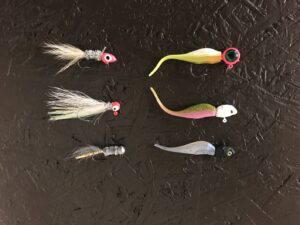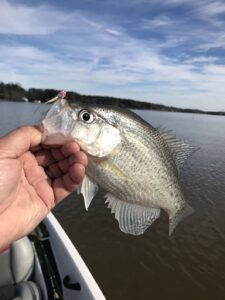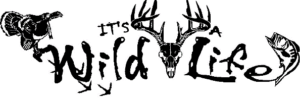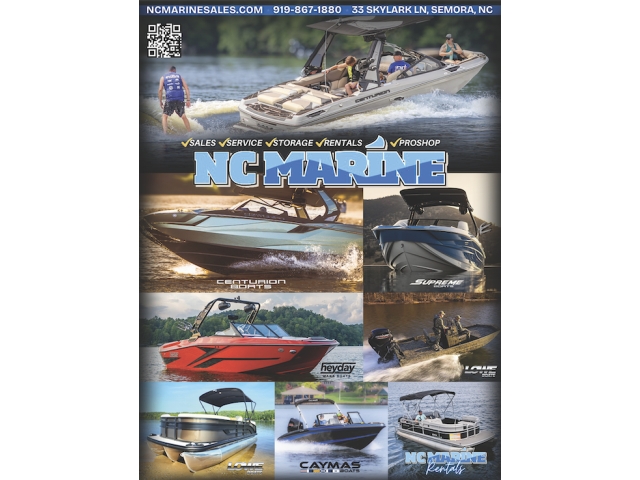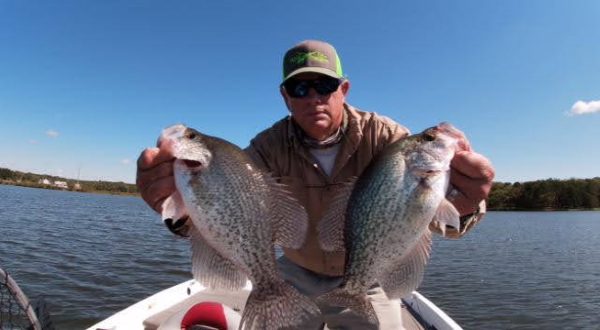
Greetings to all my fellow fishermen. I hope you all have had a chance to get out on the lake and do some fishing during the holidays. I certainly have had some good fishing trips over the past month or so, which brings me to the title of this article. Vertical jigging is a great way to fill your cooler with fresh crappie fillets.
Equipment
When I am vertical jigging, I like to use a longer rod, often my seven- or 10-foot rod. The 10-foot is my preferred rod. I have tried a 14-foot but they are just too heavy for this type of fishing. As far as reels, I use the Shimano 1000 and 2000 series spooled with a six-pound. test line. This size line works well in most conditions.
The Process
In order to vertical jig, you will have to position yourself over the crappie, whether that is four or 30 feet deep. If you have a good depth finder, you should be able to get a reading on the fish. Once you have found a depth you think the fish are holding, let the lure fall to that depth.
Most fishermen struggle with determining the depth of the lure. One method is to count your lure down. After releasing your lure, start counting off seconds. You may have to free some line from the spool to ensure enough slack so the lure continues to fall. If you are using a 1/8 ounce jig, it will fall at a rate of one and one-half feet per second, so if you count to eight or nine, your lure should be around 12 feet deep.
The second method is to use your rod as a depth gauge. Let’s say your rod is six feet long and you want to fish 12 feet deep. Release the spool and hold your rod tip straight up in the air, allowing the lure to dangle at the end of the handle. This would be six feet. Now lower the rod tip down to the water while holding the line in your index finger. Release the line and quickly lift the rod back upright and flip the bell to stop the line from free-spooling out. When you lower the rod, tip back down to the water, and you will be fishing at 12 feet deep.
Catching the Fish
After you have let your lure into the water at the correct depth you can either hold it still or give it a twitching motion. Some people are under the impression that you have to twitch the lure or jig it to make it look livelier but this is not true. The current, wind and boat movement will cause the lure to make slight movements. I let the fish tell me which presentation to use.
I have seen days that they would only hit when I held it as still as I could and on other days they hit better if I twitched the lure every few seconds. Another method is to raise the rod tip up slowly a couple of feet and then slowly let it back down. Over the last year, I have caught a lot of crappie doing this.
Choice of Lures
Choosing the right lure for this type of fishing comes down to personal preference. I normally use artificial lures. I will occasionally use live minnows. If you like minnows, though, then fish minnows. Fishing is about feeling confident with your method.
Some of my top choices in artificial lures are a white hair jig and a white or baby bass straight-tailed jig with a 1/16 or 1/8 ounce jig head. The deeper the fish, the heavier the head I use. Many times, I will tie on two jigs — the heavier jig on the bottom and the lighter jig 12 to16 inches above the heavier jig.
When it comes to crappie fishing with minnows, a single gold hook and a 1/8 ounce split shot will do the trick. I have tied on a jig/minnow combination. I will tie the jig on top and put the minnow on the bottom. As the minnow swims, it will cause the jig to mimic the movement of the minnow.
Crappie Hideouts
Crappie love to be around structures like brush piles, bridge pilings, underwater stumps or creek ledges. Let’s choose the brush pile for the purpose of this article. It doesn’t matter whether you have deployed an underwater hideout or you are fishing a tree top that has been blown into the lake or placed there by someone else.
Once you have found a good spot, approach it very quietly. It doesn’t take a lot of noise to spook crappies off a brush pile. I like to throw out a marker buoy about five to 10 feet on the windy side of the brush pile. This gives me a good visual reference of the location of the brush, which will be important if the wind is blowing.
I like to start by letting my lure down to just over the top of the brush. If the crappie are active, they will come up to strike the lure. If the crappie are not active, you will have to probe around the edges of the brush to find a willing bite.
I will have to switch colors most times after I have caught 10 or so crappie from one location. After 15 minutes or so, if I haven’t gotten a bite, I move to a different location. I may come back and check that location later. I have found places that have lots of fish but none that bite. And then I ride down the lake a mile or so and find another school of fish biting. Go figure.
The best advice I can give is to be versatile when fishing. Be willing to change presentations, colors and locations. I have several videos on YouTube about methods of vertical jigging.
I hope this information is helpful and as always, “I’ll see you on the water.”
Check out Sam Seamster’s Facebook page and YouTube Channel: Wild Life Adventures![]()
![]()









